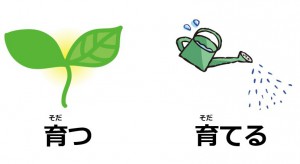Last time, you learned how Japanese adverbs work. By utilizing adverbs, you can express degree or manner of things, e.g. “極めて辛い: extremely spicy.” ”かなり辛い: quite spicy,” ”あまり辛くない: not very spicy,” and ”まったく辛くない: not spicy at all.” In this lesson, we will try to delve deeper into the world of Japanese adjectives as there are some points that Japanese learners are often confused by.
Three Points Which Learners Should Know Regarding Japanese Adjectives
1. Noun Phrases with Adjectives
| おもしろい映画: Interesting movie |
| きれいな女性: Beautiful woman |
The above examples are the types of adjectives that you have learned so far. However, you may sometimes want to specifically modify nouns such as “a woman with beautiful hair.” In that case, you can actually just add some elements.
| ストーリーがおもしろい映画: Movie with an interesting story |
| 髪がきれいな女性: Woman with beautiful hair |
That’s very useful, isn’t it? Let’s form some sentences with noun phrases.
| 渡辺 は / が | 声が | 素敵な | 俳優 | だ / です |
| Subject | Adjective | Modified Noun | ||
| Topic/Subject | Noun Phrase: Complement | State-of-Being | ||
| Watanabe is an actor with a nice voice. | ||||
| 寿司 は / が | 私が | 好きな | 食べ物 | だ / です |
| Subject | Adjective | Modified Noun | ||
| Topic/Subject | Noun Phrase: Complement | State-of-Being | ||
| Sushi is the food that I like. | ||||
| [私 は / が] | 景色が | きれいな | 町に | 行く / 行きます |
| Subject | Adjective | Modified Noun | ||
| [Topic/Subject] | None Phrase: Destination | Verb | ||
| [I will] go to a town with beautiful scenery. | ||||
The role of noun phrases will be determined by the particles placed after modified nouns. In the first and second examples, there is no particle, but だ / です, which indicates states-of-being. Thus, the roles should be complement. In the third example, the particle に give the noun phrase the role: Destination.
2. Adjectives with Particular Particles
When you directly modify nouns by using adjectives, some adjectives require some elements like objects and targets. For example, this sentence: “上手い田中さん: Tanaka-san [who is] skillful” is vague because no one knows what Tanaka-san is skillful at.
Use the Particle が When Adjectives Are Related to Potential
| 得意: good at…, strong in… |
| 苦手: poor at…, bad at…, weak in… |
| 上手, 上手い: well, skillful |
| 下手: poor, unskillful |
| 流暢: fluent |
This is one of the functions of the particle が: expressing objects of potential. When you use adjectives like the ones above, you need to add objects with the particle が. Here are some examples:
| [私 は / が] | 数学が | 苦手(だ / です) |
| [Topic / Subject] | Object | Predicate |
| [I’m] poor at mathematics. | ||
| ボブ は / が | 日本語が | 得意な | 外国人 | だ / です |
| Object | Adjective | Modified Noun | ||
| Topic/Subject | Noun Phrase: Complement | State-of-Being | ||
| Bob is a foreigner [who is] good at Japanese. | ||||
Use the Particle に When Adjectives Are Related to Attitude and Eligibility
Attitude
| 親切: kind |
| 丁寧: polite |
| 厳しい: severe, strict |
| 冷たい: cold |
Eligibility
| ふさわしい: appropriate |
| 適切な: proper |
| 詳しい: be well acquainted… |
| 強い: resistant, resilient, durable |
When you use adjectives like the above, you need to add targets with the particle に. Here are some examples.
| 井上さん は / が | 子供にも | 丁寧(だ / です) |
| Topic / Subject | Target & Inclusion | Predicate |
| Inoue-san is polite to children, too. *Implies that he/she is polite to other people, too. |
||
| [私 は / が] | 科学に | 詳しい | 人に | 会う / 会います |
| Target | Adjective | Modified Noun | ||
| [Topic/Subject] | None Phrase: Target | Verb | ||
| [I will] meet a person who is well acquainted with science. | ||||
Use the Particle と When Adjectives Are Related to Interactive Relationship
| 親しい: close, intimate |
| 友好的: friendly, amicable |
| 無関係: unrelated |
When you use adjectives like the ones above, you need to add partners of interaction with the particle と. Here are some examples:
| 井上さん は / が | 田中さんと | 親しい(です) |
| Topic / Subject | Partner | Predicate |
| Inoue-san is close to Tanaka-san. | ||
| ロシアと | 友好的な | 国は | 中国(だ / です) |
| Partner | Adjective | Modified Noun | |
| Noun Phrase: Topic/Subject | Predicate | ||
| The country [which is] friendly with Russia is China. | |||
Both the Particle に and と Are Allowed When Adjectives Are Related Positions and Similarity
Positions
| 近い: near |
| 遠い: far |
| 垂直: vertical |
| 平行: parallel |
Similarity
| 等しい: equal |
| 同じ: same |
Considering the functions of the particle に: Target, and the particle と: Interaction of Partners, it’s reasonable that you can express position and similarity either way.
[adsense]
3. Detailed Usage of Adjectives
Taking this opportunity that you’re learning advanced adjectives; we’d like to mention some exceptions and important usages.
いい VS. よい
| 東京ホテルは雰囲気が いい / よい。 As for Tokyo Hotel, the atmosphere is good. |
Both いい and よい can be translated as “good.” The difference is that よい is a formal word and used in written Japanese while いい is a casual word and used in spoken Japanese. However, when you conjugate よい and いい, you can use only よい. This is applicable for other words with いい as well, e.g. “かっこいい: cool,” “仲がいい: close, intimate” and “頭がいい: bright, intelligent.”
| 東京ホテルは雰囲気がよくない。 As for Tokyo Hotel, the atmosphere is not good (*いくない is wrong!). |
Exception
When you directly modify nouns by using “good” in Japanese, you always use いい regardless whether it’s spoken or written Japanese.
| いい時間(だ / です)。 [It] is about time [to do something]. |
| いい感じ(だ / です)。 [It] is a good sense. |
Adjectives VS. The function of the Particle の: Explanation
As we explained in the previous article, the particle の can work to make an explanation like “車の本: book about cars.” Some adjectives require you to substitute themselves for the particle の depending on the context.
近くの Vs. 近い
| 近くのカフェに(行く / 行きます)。 [I will] go to a café near [me]. |
| 近いカフェに(行く / 行きます)。 => Unnatural! |
“近い: near” and the antonym: “遠い: far” are adjectives while “近く: nearness” and “遠く: farness” are nouns. When you’re talking about distance from where you are, which is generally omitted in a sentence, the nouns with the particle の are more suitable.
When they are in noun phrases, you can use both of the expressions. Many textbooks say that 近い and 遠い are more natural in noun phrases; however, native speakers often use 近くの and 遠くの as well. *Note: “多い: many” and “少ない: a little” have the same rule as 近い and 遠い.
| 駅から近くのカフェに(行く / 行きます)。 [I will] go to a café near the station. |
| 駅から近いカフェに(行く / 行きます)。 [I will] go to a café near the station. |
In Japanese, 近い and 遠い can express time as well. In this context, 近くの and 遠くの cannot be used.
| 遠い昔: long time ago |
| 遠くの昔 => Wrong! |
Adjectives with Irregular Conjugations
大きい VS. 大きな
When you directly modify nouns by using “大きい: big” and “小さい: small,” Japanese people sometimes replace い with な like “大きな夢: big dream,” even though it’s an i-adjective. The difference in nuance is not clearly defined. Thus, you can use both of them for the time being.
同じ: same
- When you use 同じ as a subject complement, you say 同じ(だ / です)or (じゃない / じゃありません)
- When you directly modify nouns with 同じ, you don’t need to add anything , e.g. “同じ学校: same school”
- When you use 同じ as adverb, you add く: 同じく
- When you use the sentence pattern “adjective + する (*you will learn this later),” you add に: 同じ に
This is the trickiest one. Although some dictionaries define this as a noun, Wasabi regards this as an adjective. The above is the conjugation rules.
Summary
- You can make a noun phrase with adjectives like 私が好きな食べ物.
- You use the particle が when adjectives are related to potential.
- You use the particle に when adjectives are related to attitude and eligibility.
- You use the particle と when adjectives are related to interactive relationships.
- There are some exceptions of conjugations.
As you may notice, the knowledge of the functions of Japanese particles is really helpful for using various adjectives in place. If you have some doubts, we recommend to review them here. Next, you will try another advanced topic: Intransitive VS. Transitive Verbs.





